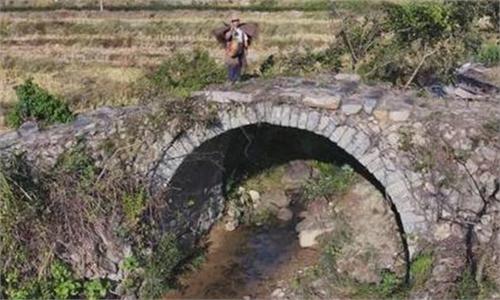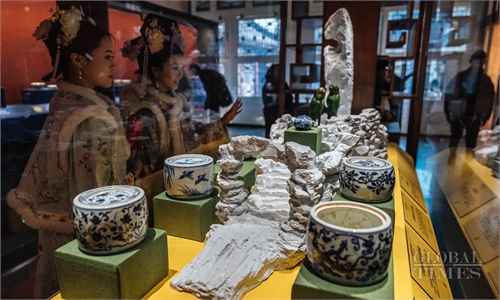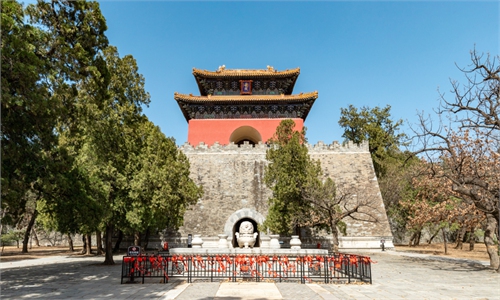ARTS / CULTURE & LEISURE
2030 will mark a new chapter for Ming Dynasty heritage
Ancient tombs awakening
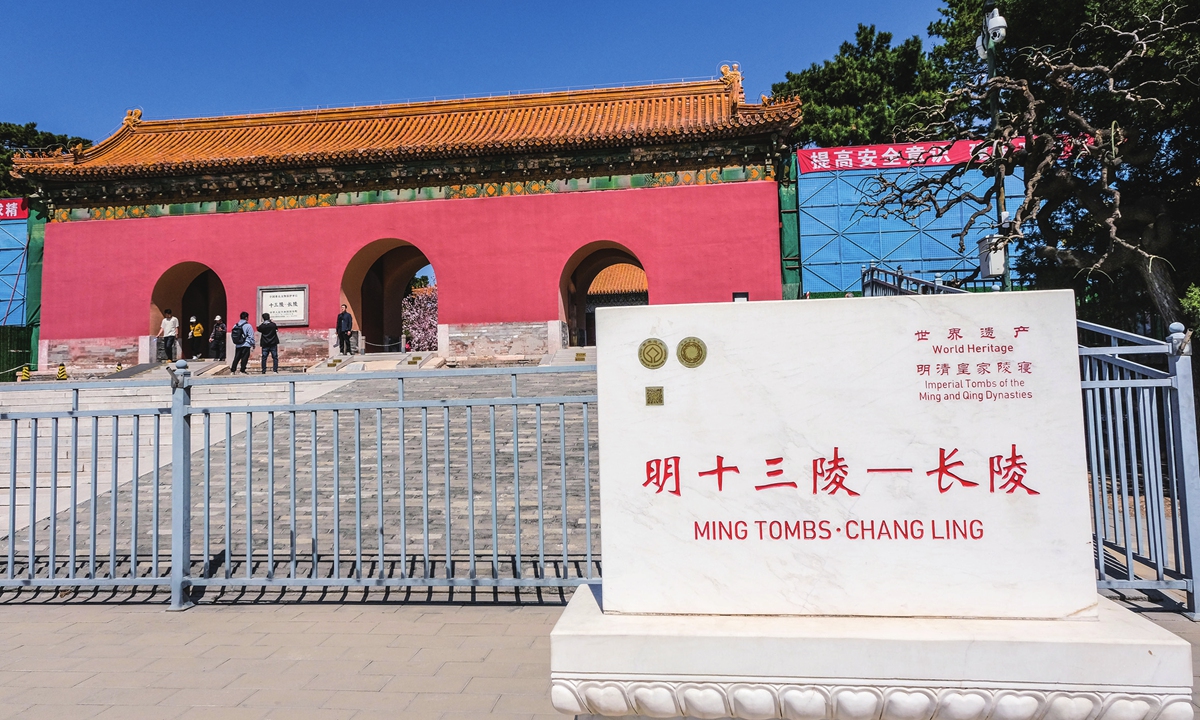
Tourists stroll around the entrance to the imperial Changling Tomb, one of the tombs of the 13 Mausoleums of the Ming Dynasty in Beijing, on April 5, 2025. Photos: VCG
Nestled just north of Beijing, the Ming Tombs stand as a timeless testament to the grandeur and spiritual reverence of the Ming Dynasty (1368-1644). These imperial burial grounds, first constructed on June 20, 1409, have housed the eternal rest of 13 Ming emperors. Now, over six centuries later, the Ming Tombs are preparing for a monumental transformation. By 2030, the full extent of these magnificent mausoleums will be unveiled, offering visitors a panoramic immersion into the art, culture and rituals of the Ming Dynasty.Thanks to plans to open all major tombs, including the sacred pathways, ritual sites and architectural ruins, the Ming Tombs are set to become a living museum of imperial Chinese history. Visitors will immerse themselves in the grandeur of Ming-style architecture, the symbolism of royal burial traditions and the stories of emperors who shaped a dynasty that profoundly influenced Chinese culture, according to the management office of the Ming Tombs.
"Opening a larger area to the public can help attract attention and participation, thus supporting the systematic protection of tomb architecture, cultural relics and the surrounding environment, safeguarding them from natural erosion or human damage caused by long-term closure. At the same time, it can also enhance the public's overall understanding of the Ming Tombs, which in turn contributes to the promotion of Ming culture," Liu Shaohua, an associate professor in Ming history at Beijing Union University, told the Global Times on Wednesday.
A majestic cultural treasure
When stepping into the Ming Tombs, the first thing that strikes visitors is the sense of grandeur. The Sacred Way (Shendao) - a 7.3-kilometer pathway lined with towering stone statues of mythical creatures and royal officials - sets the tone for the journey ahead.
This pathway, designed to connect the imperial spirit to the heavens, will be fully restored, allowing visitors to walk in the footsteps of emperors and their royal processions.
The Sacred Way is not just a physical path but a spiritual one, guiding visitors through layers of Ming Dynasty philosophy. The statues, silently guarding the tombs for centuries, exude an air of solemnity. With the restoration and integration of nearby heritage points, the Sacred Way is regarded as a seamless link to the tombs themselves, offering visitors a more holistic perspective of the Ming Dynasty's ceremonial landscape.
Each tomb of the mausoleum is comprised of a group of ground structures and an underground burial chamber, where coffins containing the deceased emperor and his empress or empresses are placed. The ground structure carries much ritual significance, and the burial chamber is built as a solemn stone palace with a gateway and thrones.
For instance, at the heart of the Ming Tombs lies Changling Tomb, the burial site of Emperor Yongle, the ruler who oversaw the construction of the Forbidden City. Its centerpiece, the Palace of Grace and Blessing (lit: Ling'en Hall), is a masterpiece of Ming architecture. Supported by immense nanmu (Phoebe zhennan) wood columns - some of the largest in the world - hall radiates a sense of imperial authority and spiritual reverence.
Walking through the Ling'en Hall feels like stepping into another era: The intricate dougong (interlocking wooden brackets), vibrant murals and gilded details whisper the stories of grand imperial ceremonies, and one finds it is easy to imagine the scene centuries ago, as priests offered prayers and incense in honor of the emperor.
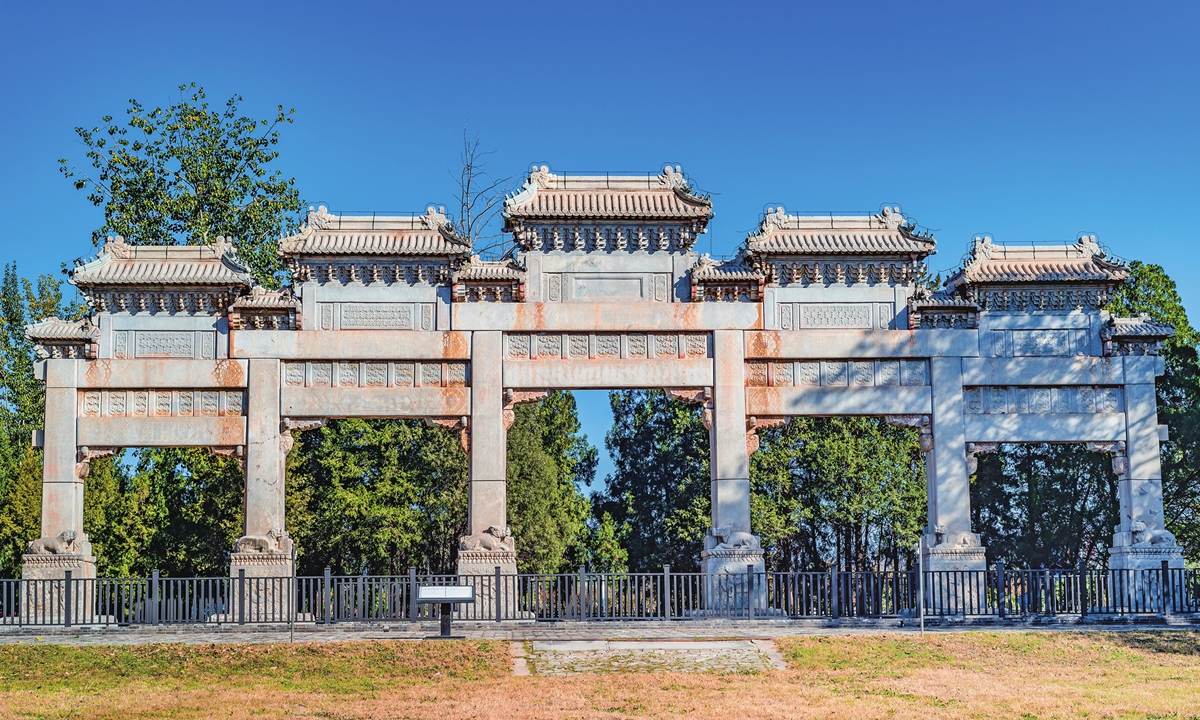
Stone archway of the Ming Tombs in Beijing
Road to 2030The plan to gradually expand the scope of cultural heritage openness includes three steps. The Siling Tomb and Yongling Tomb, the tombs of Emperor Chongzhen and Emperor Jiajing, have been opened to the public in December 2024 as the first phase of the plan.
The fortress-shaped Minglou Tower in Jiajing's mausoleum was built with exquisite materials. Its eaves, rafters and arches resemble wood, but they are actually made of stone. The mausoleum of Chongzhen, the last emperor of Ming Dynasty, is the smallest one among the Ming Tombs. It was built on the renovation of his concubines' tomb, bearing rich historical information, as the Xinhua News Agency reported.
Preparations for the 2030 full opening are in full swing. The restoration and protection of the outer boundary walls (zhaoyu), which originally demarcated the sacred burial grounds, are underway. Plans to construct scenic walking trails and observation platforms will enable visitors to appreciate the tombs from new vantage points, showcasing the vastness of the Ming imperial vision.
But this is not just about preserving structures. It is also about reviving a cultural legacy. The Ming Tombs management office plans to incorporate educational displays, interpretive signage and multimedia exhibitions to narrate the stories behind the tombs' construction, the emperors' lives and the artisans' craftsmanship.
The digital displays will also be shared through online virtual platforms and autonomous touring vehicles, including basic information about the heritage site, its value, transportation details, historical research findings related to the Ming Tombs, as well as relevant historical documents, archives, images and more, providing a comprehensive showcase of the history and unique charm of Ming culture.
Visitors can experience not just artifacts, but the full spectrum of Ming culture - its politics, religion and architectural ingenuity.
Liu also pointed out that some potential risks to the safety of cultural relics may follow the broadening of the scenic area.
He emphasized the importance of strictly controlling the number of visitors and improving protection facilities, adding that adhering to the fundamental goal of cultural relic protection, differentiated opening and management should be implemented, with tailored services to meet the diverse needs of different visitors.
He then called for greater use of advanced technologies, including the development of digital experience zones to recreate historical scenes, aimed at minimizing the disturbance to the cultural relics.

